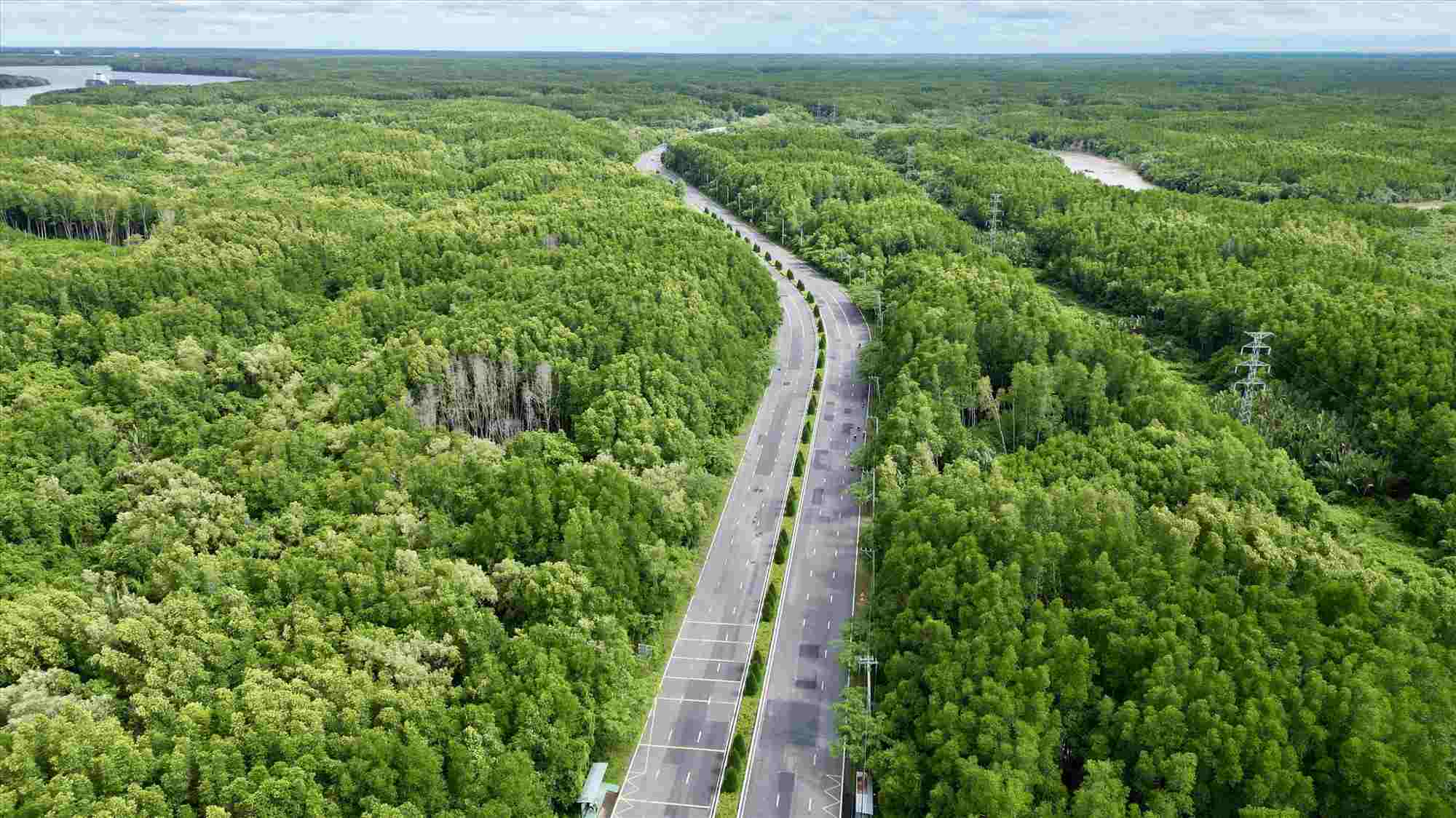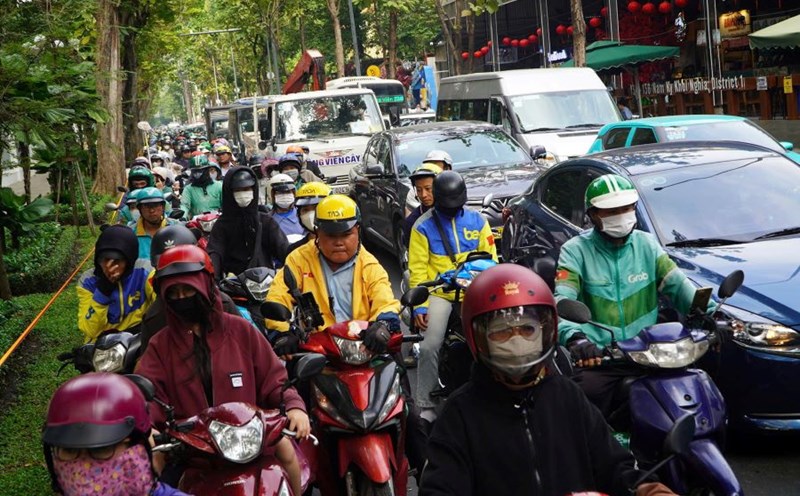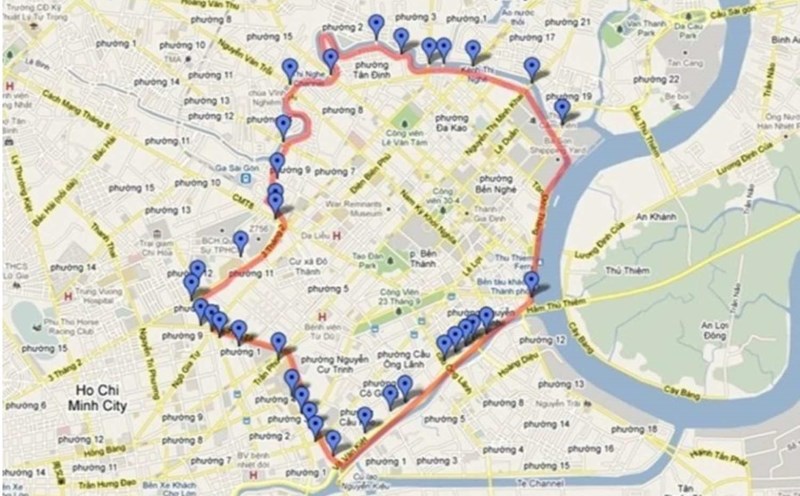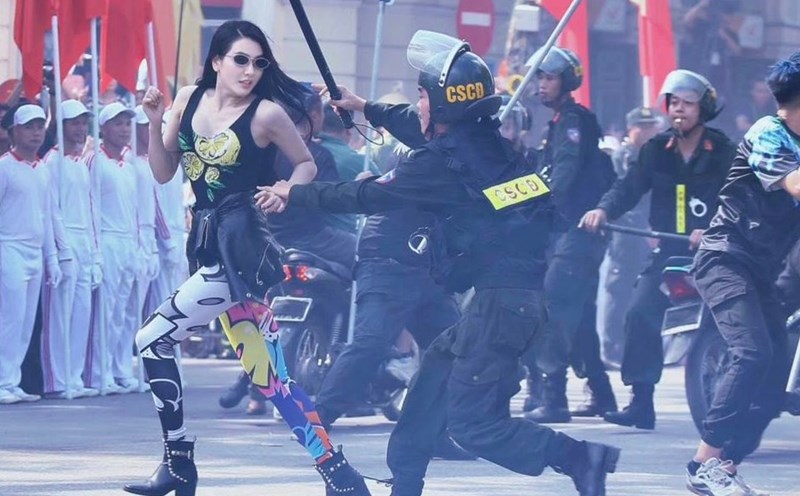This is the content of the Vehicle Emission Control Project being developed by the Ho Chi Minh City Department of Construction, seeking opinions.
According to the project, the solutions in Can Gio will be synchronized with the central area but have a separate roadmap.
That is, from July 1, 2026, motorbikes and mopeds in circulation in Binh Khanh, An Thoi Dong, Can Gio, Thanh An communes will have to have their emissions inspected - 6 months earlier than the whole of Ho Chi Minh City (from January 1, 2027).
According to the general emission control project, the roadmap requires that from January 1, 2032, motorbikes in Ho Chi Minh City must meet the emission standards of Level 2 or higher. The above 4 communes in Can Gio will apply 2 years in advance, from January 1, 2030.

The proposed project from 2026, this area will pilot traffic control zoning, limiting cars and motorbikes with low emission standards to move on the Rung Sac route (from Binh Khanh ferry to Duyen Hai road) on the weekend.
The goal is to encourage people to use environmentally friendly vehicles such as public buses, while creating a stepping stone for people to gradually get used to switching to low-emission vehicles, limiting sudden impacts on socio-economic activities.
According to the proposal, cars under Level 4 emission standards and motorbikes below Level 2 standards will be restricted to circulation on weekends.
The project also proposes to deploy a license plate recognition camera system, connecting vehicle and emission databases to detect violating vehicles.
Violating drivers will be fined and have their driving license points deducted according to the provisions of Decree 168/2024/ND-CP.
In which, reminders and instructions for vehicles in the first month. The proposed penalty is 50% compared to the current regulations from the second to the sixth month. The penalty shall be implemented in accordance with the regulations after the above-mentioned time.

In addition, the project proposes to arrange on-site emission inspection equipment, using a specialized gas analysis machine (gas analyzer) that meets QCVN standards, with CO, HC, NOx measurement sensors, exhaust system and data processor. Mobile inspection points can be located at airports, seaports or bus transit points.
In addition, mobile monitoring devices using laser sensors and cameras will be installed along the roadside to measure the emission concentration of the vehicle in operation, automatically identify license plates, look up emission standards and send warnings. The data will be analyzed by AI, integrated with inspection and penalty information.
The project also proposes a policy to support people in Can Gio area to switch to using electric vehicles. 50% reduction in registration and license plate fees for electric motorbikes and electric cars.
For poor households, 100% support for vehicle conversion to electric motorbikes, near-poor households are supported 80% for electric motorbikes worth less than 20 million VND. These households are also supported with vehicle purchase fees and gasoline motorbike buybacks when converting.
For regular households, when switching to electric vehicles, they will be supported to buy back gasoline motorbikes according to the term: vehicles under 5 years are supported with 5 million VND; from 5 to under 10 years of support 4 million VND; from 10 to under 15 years of support 3 million VND; from 15 to under 20 years of support 2 million VND; from 20 years or more are supported with 500,000 VND.
In addition, maintain the preferential loan interest rate for installment electric motorbikes at 4%/year for individuals and households.










